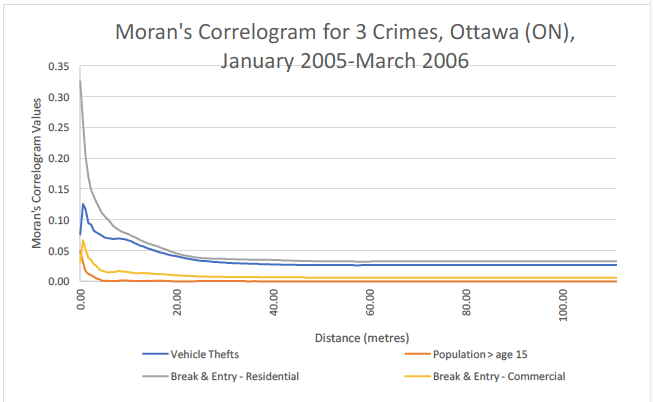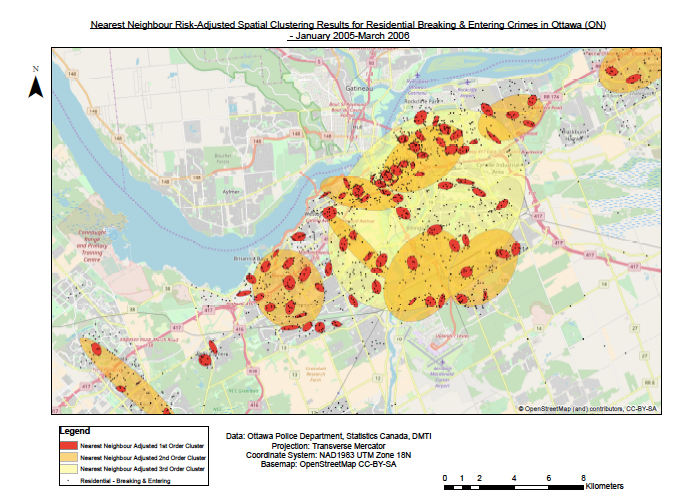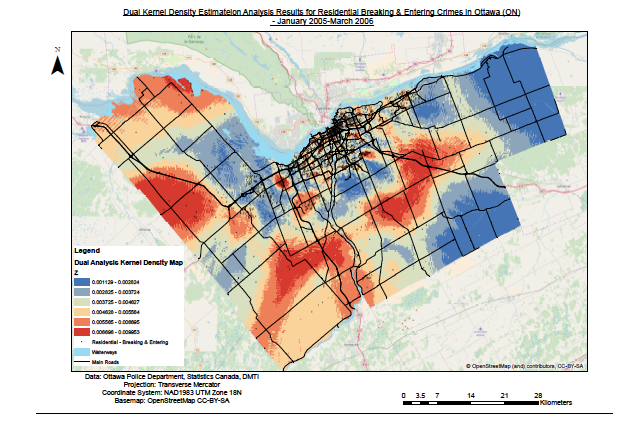Brower, A. M., & Carroll, L. (2007). Spatial and temporal aspects of alcohol-related crime in a college town. Journal of American College Health, 55(5), 267-75.
This paper addressing the relationship between drinking and student crime in Madison (Wisconsin), making two major arguments:
- More serious crimes occur at the intersection between high density student areas and high density drinking outlets.
- Non-student residents living near students submit noise complaints at around midnight when they are going to sleep and student parties are still continuing.
Methodology:
The methodology was very basic – effectively mapping reported crimes by time onto a basemap in ArcGIS.
Results:
- There was a peak in serious crimes when bars closed downtown, which was identified as a high density cluster for drinking and crime incidents.
- Noise complaints, as expected, were highest between 9pm and midnight.
Although the paper lead to genuine zero-tolerance policies by the University and the city, the authors underestimated the statistical potential of GIS, as they presented it as a merely descriptive tool. As such we assigned the paper a mark of 5/10.




